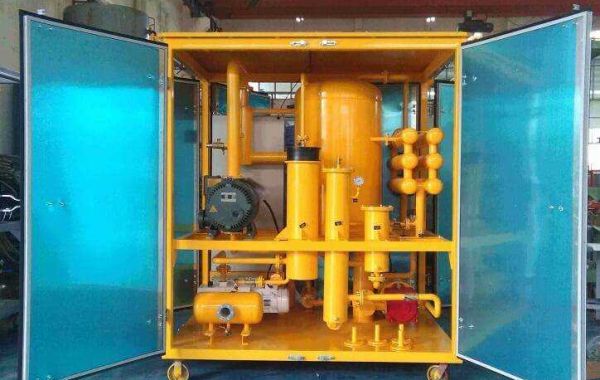The Role of Filtration
Over time, transformer oil accumulates impurities like moisture, dissolved gases, and solid particles. These contaminants can degrade the oil's insulating properties, leading to increased electrical conductivity and potential arcing faults. Transformer oil filtration machines address this by employing various techniques to remove these harmful elements.
Vacuum Filtration: Pulling Out Impurities
Vacuum filtration utilizes the power of negative pressure. The oil is heated and then drawn into a chamber where a vacuum is created. This low-pressure environment promotes the evaporation of water and dissolved gases present in the oil. Additionally, specialized filter media removes solid contaminants as the oil passes through.
Advantages of Vacuum Filtration
Superior Dehydration and Degassing: Vacuum technology excels at removing moisture and dissolved gases from the oil. This is particularly important for maintaining the oil's dielectric strength, a crucial factor for preventing electrical breakdowns.
Gentle on the Oil: The low-pressure environment minimizes the risk of shearing or degrading the oil molecules, which can occur with some pressure filtration methods.
Can Handle Highly Contaminated Oil: Vacuum filtration is effective even for heavily contaminated oil, making it a valuable tool for restoring degraded oil to a usable condition.
Pressure Filtration: Pushing Out Contaminants
Pressure filtration utilizes a pump to force the oil through a series of filters. These filters trap solid contaminants as the oil passes through. Pressure filtration can also be combined with other techniques like clay absorption to remove certain dissolved impurities.
Advantages of Pressure Filtration
Faster Processing: Pressure filtration can often process oil faster compared to vacuum filtration, making it suitable for situations where quick turnaround is necessary.
Lower Initial Cost: Pressure filtration machines generally have a lower initial cost compared to vacuum machines.
Effective for Removing Solid Particles: Pressure filtration is highly effective at removing larger solid contaminants like dirt, metal shavings, or paper fibers from the oil.
Choosing the Right Technique
The ideal filtration technique depends on the specific condition of the transformer oil and the desired outcome. Here are some general considerations:
Severity of Contamination: For heavily contaminated oil with significant water and gas content, vacuum filtration is often preferred.
Required Processing Speed: If quick turnaround is crucial, pressure filtration might be a better choice.
Budgetary Constraints: Pressure filtration machines generally have a lower initial cost than vacuum machines.
Conclusion
Both vacuum and pressure filtration techniques play vital roles in transformer oil purification. Understanding the strengths and limitations of each method allows for selecting the most suitable approach for maintaining optimal oil quality and ensuring the continued safe and efficient operation of transformers.








